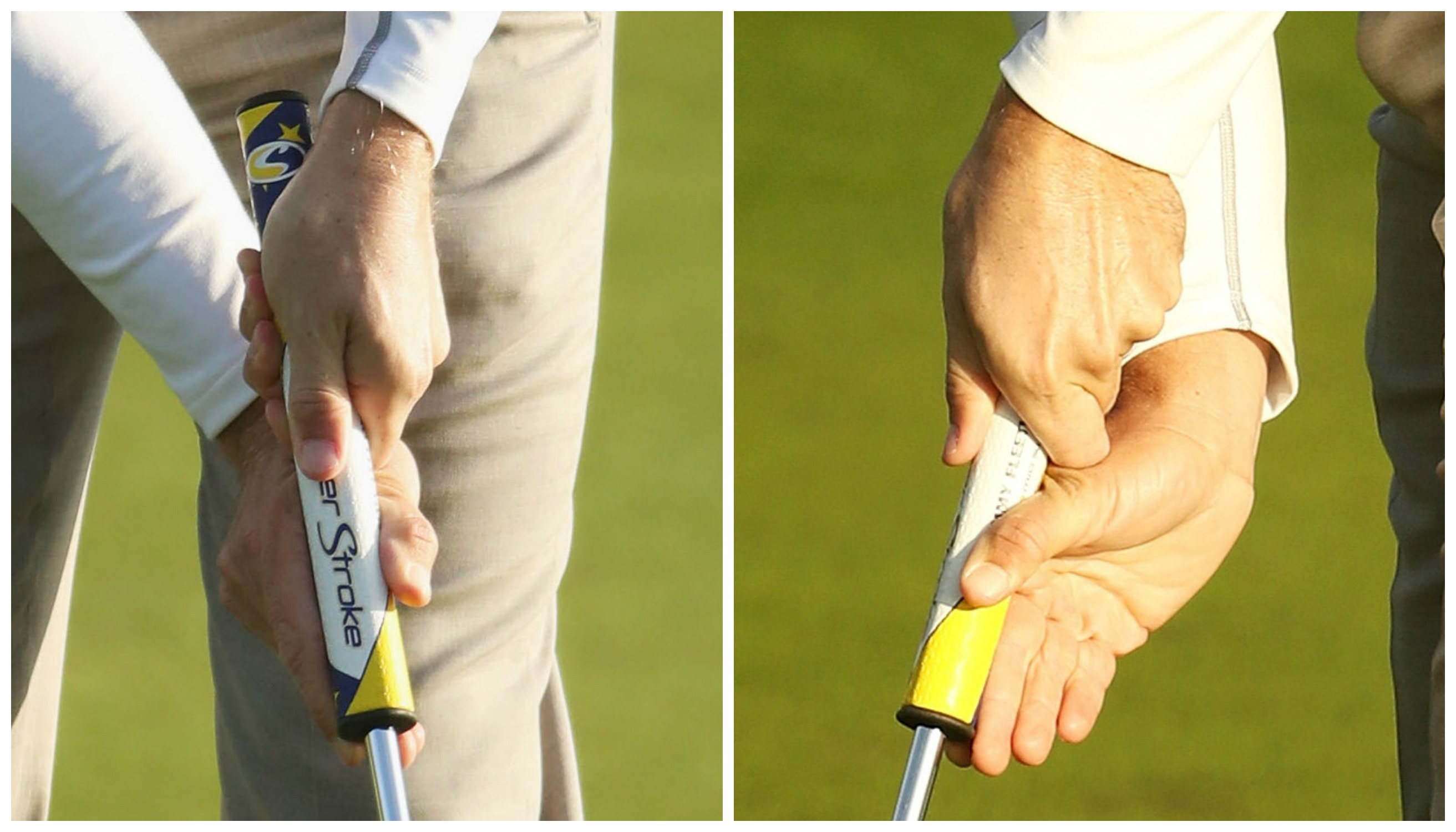Justin Rose, Sergio Garcia, and Tommy Fleetwood all had two things in common this past week. First and foremost, they were the champions, but to the point of this article, they all used the claw putting grip to dominate on the greens at Le Golf National.
So what is it about this style of grip that turns good putters into great and clutch putters?
Hottest thing in France right now?
Tommy Fleetwood’s putter ? pic.twitter.com/pbhUK3TH28
— Ryder Cup Europe (@RyderCupEurope) September 28, 2018
The most beneficial aspect of the claw grip is the consistency of the strike. For example, the right-handed golfer has the trail hand or right hand in a more neutral position, and the only influence it has on the stroke is in generating speed down a unified plane.
By altering the right hand on the grip the arms, elbows, and shoulders are now operating on the same stroke arc. This means the chance that the golfer will be able to deviate the putter head off the intended path is very minimal.
As we watch the pros use the stoke, we can observe the right elbow is a great representation on where the face is pointed during the stroke. And although the face would appear to open and close slightly, it is staying perfectly square to the path.

NOTE: outside of a couple feet, any stoke will have some curvature to it. This is because the center of the putting motion is a fixed point and our shoulders and arms arc around that position.
The perfectly square putter face leads to consistent strikes time after time, building confidence and the ability to adjust and controlled the speed of the ball and that is the major benefit.
Controlling the speed means that any golfer can be left with a makeable putt even after a very poor read. For instance, you read two feet of right to left break on a 20 foot putt. The putt is dead straight, sounds horrible right. Not really, because with perfect speed you only have a two-foot putt from the right of the cup to make.
What was once ostracized and considered a sign of a poor putter searching for answers has now proven to be an effective and efficient way to roll the rock.
You may want to try the grip in practice to give you a great sense of what the putter face is doing during your stroke and it may help diagnose a flaw or two.





